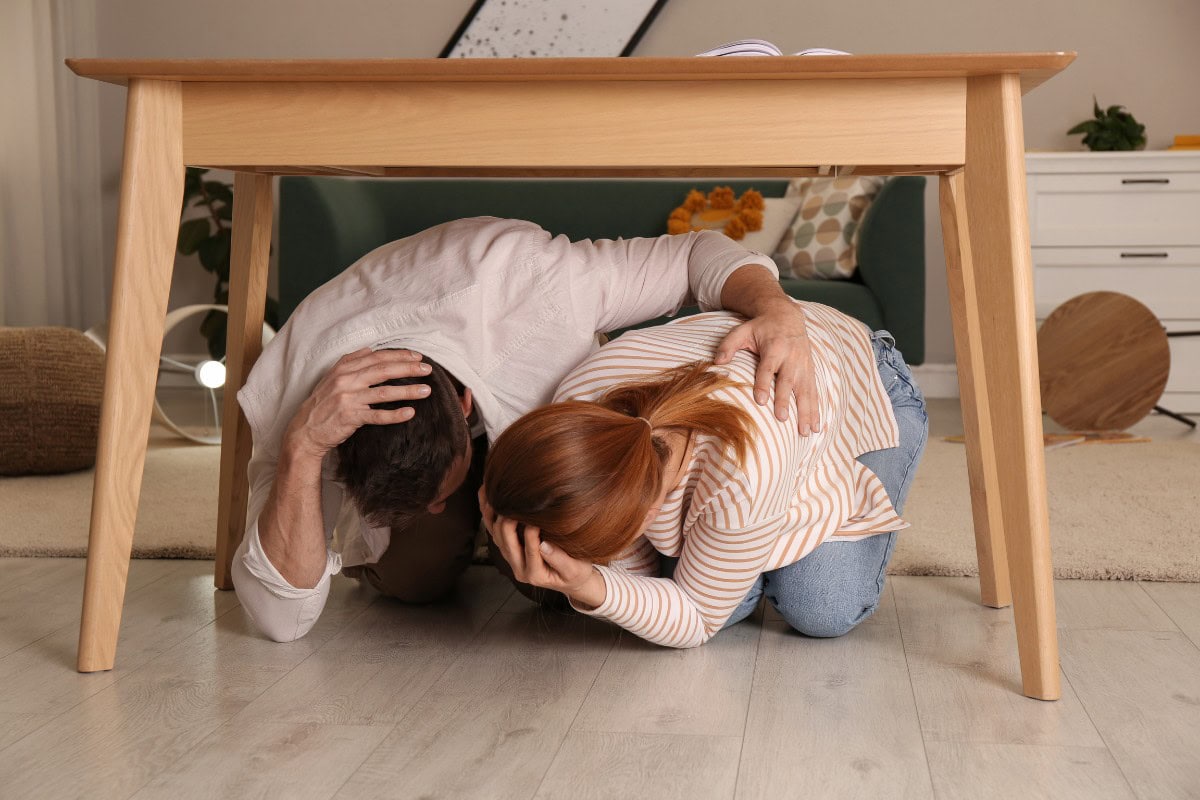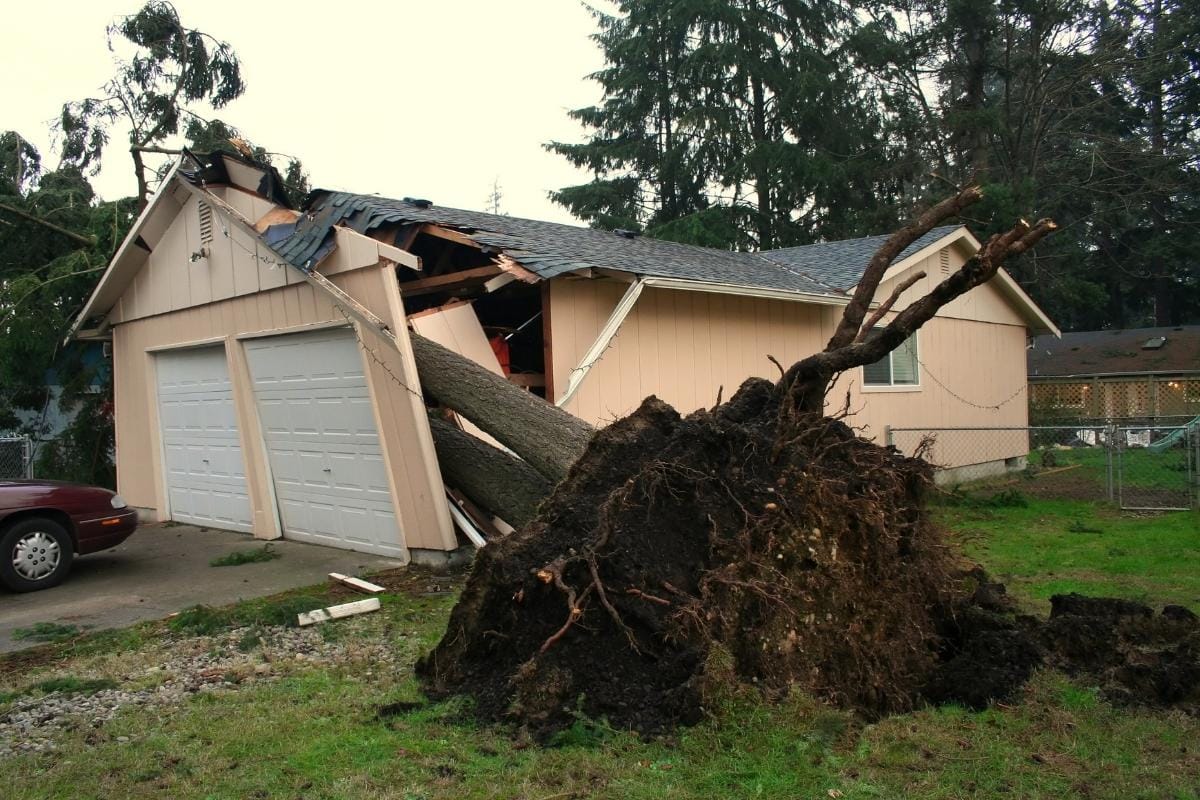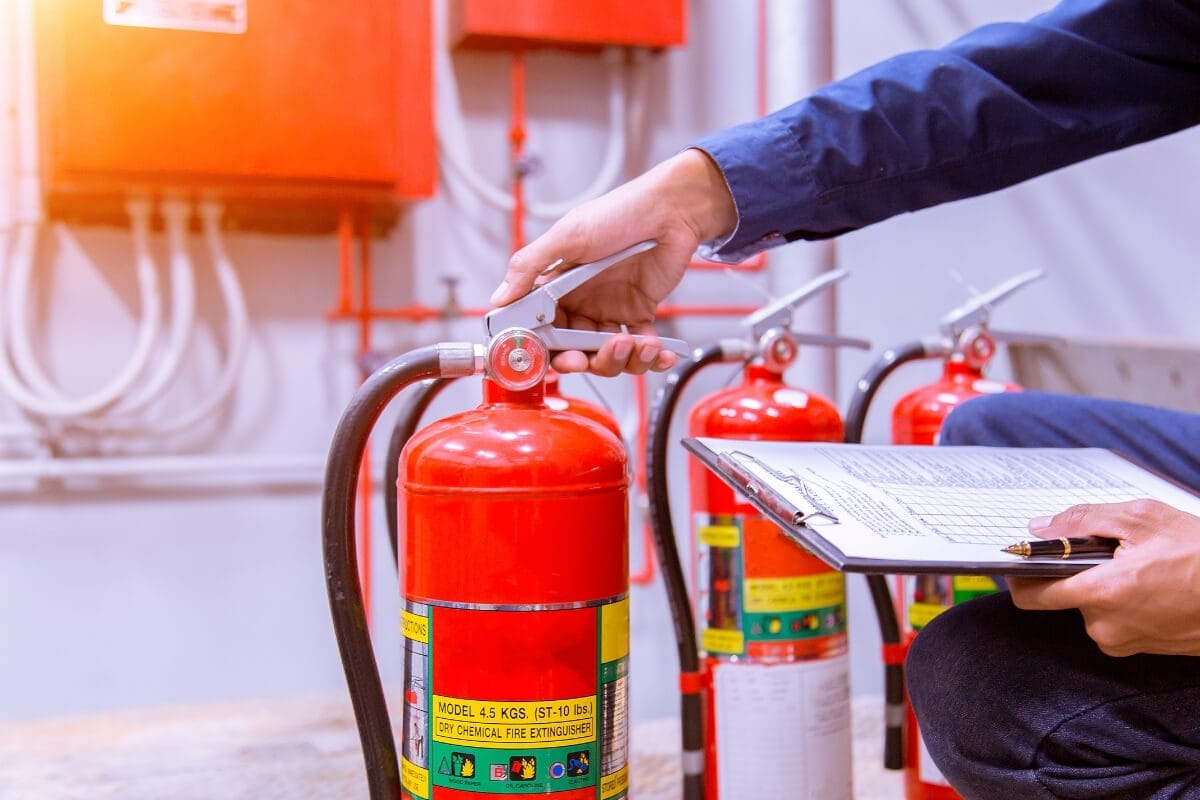Earthquakes, like flooding, can occur at any moment – but the good thing about today’s technology is that seismologists monitor seismic activity daily, so they can broadcast any impending earthquakes should they come. Earthquakes are a natural phenomenon that occurs when large sheets of rock under the soil suddenly release accumulated pressure and force.
You see, the Earth as a planet is always in a state of change. There are several layers of rock under the soil that we know so well; over time, shifts occur in these rocky layers, and when pressure has to be released, the ground that we walk on can shake so fiercely that buildings, roads and bridges crumble and collapse.
Countries like Japan are only too familiar with the devastating power of earthquakes. We can never know exactly when a powerful earthquake is about to strike a town or city, so it is best to be prepared for its sudden manifestation.
Again, if you have never experienced such an occurrence before, don’t rest easy – because according to studies, 45 states are actually at moderate risk for earthquakes in the United States. Though this phenomenon has historically been associated with the West Coast, facts show that other states are equally at risk.
Preparing for an Earthquake
If a possible earthquake has been announced in your area, you must start preparing for the potential disaster:
Emergency Kit
Make sure that you have an emergency kit ready. They are an invaluable item and will form the basis of your well-being during the first 72 hours of any disaster
Furniture and Heavy Objects
Shelves and other wooden furniture should be secured to prevent them from toppling over during the actual earthquake. Heavy objects should be placed as close as possible to floor level. During a quake, those heavy items will most likely fall, and that can be dangerous to you and your family. Imagine vases and heavy books falling all around you; earthquakes can easily do that to your home.
Hanging Decorations
If you have frames and other hanging decorations near couches, remove these immediately. Place these near the floor level and away from beds, seats, couches, etc.
Lighting Fixtures
Lighting fixtures should also be secured and braced in the advent of an earthquake. If you don’t have to brace your fixtures at home, remove the light bulbs instead. It’s one thing to clean up fallen fixtures – it’s a completely different thing when you have to clean up shattered and powdered light bulbs. The dust from shattered light bulbs is poisonous – cover your nose and mouth if you have to clean up stuff like this.
Large Appliances
Furnaces and large appliances should be fastened or bolted down to the floor if possible. Bolting down large appliances is considered a best practice because this will prevent the earthquake from toppling your expensive appliances. However, if this is not an option, what you can do is strap them to the wall. You should obtain the fasteners and straps/rope now, before an earthquake strikes.
Structural Issues
Most houses, especially those that are ten years old or older, have minor structural problems such as cracks in the walls and the foundation. Small cracks in the foundation can become massive fissures during an earthquake. If you’re aware that your house has such defects, it is best to have these repaired as soon as possible by a professional. A strong earthquake can easily destroy a small home if it is in a neighborhood situated near the epicenter of a quake.
Regular Inspection
Perform regular checks of the foundation of your home. Checking the foundation every two to three months is a good practice.
Household Chemicals
Most homes have a fairly large supply of insecticides and other household chemicals. These chemicals must be stored securely in a bolted-down cabinet that can be closed with a latch or lock in the event of an earthquake.
Drop, Cover, and Hold On
Remember the DCH code during an earthquake: D (Drop), C (Cover), & H (Hold On).
Take Action Today
Remember, the key to surviving an earthquake is preparation. Don’t wait until it’s too late to take action. Start preparing today, and you’ll be better equipped to weather the storm when an earthquake strikes.
What to Do in an Earthquake
If you feel the ground shaking violently, there’s no time to lose:
Lower yourself to the ground immediately (drop), and find the sturdiest cover that you can (cover). Suitable cover during an earthquake includes desks, tables, and so on. Any piece of furniture that can protect you from falling debris can be used. Run for the kitchen or your home office, as these areas usually have the best earthquake covers.
If you cannot find any suitable cover, go to a corner of the house (one without any frames or cabinetry that may fall on you), and cover your head with your arms. Crouch as low as you can, and wait for the earthquake to subside.
Staying Safe During the Earthquake
Keep everyone crouched on the ground – don’t let anyone go running around the house to get smartphones or gadgets just because there’s an earthquake. That is dangerous; you can call for help after the earthquake. Emergency services are probably on their way anyway, so there’s no need to call them.
The worst thing that could happen to you when you’re crouching on the floor is to get hit by falling picture frames, vases, and (heaven forbid) cabinets. That’s why it’s recommended to seek a corner that is as far away as possible from items that can fall on you.
However, you should also avoid spots near windows and light fixtures. Windows have glass, and glass can shatter or fall off during a violent earthquake. You can get hit by shattered glass or by fixtures.
If the earthquake strikes while you are still in bed, there is no need to panic. Beds are usually placed away from light fixtures and windows (unless your bed is right next to a window with several panes of glass) and are considered safe places during an earthquake.
Grab your biggest pillow, place it over your head, and wait out the earthquake. However, if you are right next to cabinets, shelves, heavy books, and glass windows, make a run for the nearest and safest corner and crouch there. Don’t forget to cover your head with your arms. If you can find a better cover, such as a small table, use it to better protect yourself from any falling debris or items.
Some people think doorways are safe places to wait out an earthquake. They’re not. Unless a doorway has been specifically designed to be sturdy and load-bearing, doorways can actually collapse, so stay away from them. Pass through doorways only if they are nearby, and you know you can find a safer place to wait out the end of the earthquake.
Staying Indoors vs Going Outside
Many people ask: is it safer to go outside during an earthquake? The answer is no – because so many things can go wrong as you make a mad dash for the door. You can get hit by falling light fixtures, furniture, large appliances, and heavy books sitting on top of shelves.
You can also get injured by tripping over electrical wiring and other stuff that can be displaced during a strong earthquake.
If we were to examine the earthquake drills used in the United States and in other countries, the best practice is still to find the safest corner inside the structure and wait until the earthquake runs its course.
If an earthquake strikes while you are still at work, it’s better to stay put than to make a mad dash for the elevators. Ironically, this is the first thing people think to do when they are working several floors up. It’s dangerous to use elevators during an earthquake because those things can easily malfunction.
You can end up getting stranded halfway down, or worse, the elevator you are riding might suddenly malfunction and plummet like a dead weight all the way down to the ground floor.
And no, jumping right before the perceived impact won’t make your landing any less deadly. The force of several tons of steel and cable is the same even if you jump a split second before impact.
During an earthquake, electrical and automatic systems like alarms (and even sprinklers) can suddenly activate. There is no point in trying to turn off these things, so just stay put. Also, power can easily go out due to fractured power lines, so be prepared to navigate in the dark afterwards.
Do not try to locate a flashlight when the power goes out during an earthquake. Stay put, and focus on protecting yourself and those around you. It is important to have a cover above your head at all times because, if something falls on you and knocks you out, your chances of survival are greatly diminished if your city or town is hit by a massive earthquake.
If You’re Outdoors
What if you are outdoors during an earthquake? What should you do? Instinct often tells people to make a run for it, but this is the worst possible thing that you can do because you can trample others who are also making a crazy run for it, and you might end up getting hit by something that has already been toppled by the earthquake.
Just stay put during an earthquake. Move away from others who are running aimlessly to avoid getting trampled yourself. Don’t let anyone sway you into “running with the pack” because the “pack” doesn’t really know where it’s going.
Move away only if you need to, and you only really need to move if there is a power or telephone line nearby. Also, stay away from areas with big streetlights, as these can fall over quite easily during an earthquake. If you are driving, park your car away from the usual hazards and wait for the earthquake to stop.
Your car will serve as an adequate head cover from all falling hazards; it is foolhardy to lock your car and make a run for it. Also, buildings are considered hazardous to cars and pedestrians during an earthquake.
Wide-open spaces, such as parking lots, are your best friends when an earthquake suddenly strikes. Also, don’t drive during an earthquake! Stop as soon as you find a suitable spot, and wait for the earthquake (and its aftershocks) to stop before driving again.
It is always good policy to have your emergency kit or bug out bag handy. This way you can grab and run if it is stored near a normal exit. Water and some kind of blanket are always paramount in an emergency backpack or bag.
If You’re Trapped Under Debris
In the event that your roof collapses and you find yourself unable to escape, you need to stay as calm as possible to survive. People who panic rarely survive this type of situation because worrying and anxiety take over so much that they cloud judgment. Here’s what to expect when you are buried by debris:
- It’s going to be really dark.
- There’s going to be a lot dust and other particles that might get into your mouth, eyes, and nostrils.
- The air around you might become stale and of poor quality.
- You might not be able to hear what’s happening outside, and you may not be able to gauge whether or not others can actually hear that you are trapped under the debris.
With these in mind, here are some extremely important pointers:
- Never try to light up your surroundings with a match or a lighter. This might sound strange, but if your building or house collapses, there is a big chance that flammable chemicals, or even gas, are present. You would not want to light a big fire while you are trapped under debris. If you have a smartphone or small flashlight with you, use that instead.
- Moving about too much can disturb the dust around you, which makes breathing a lot harder. Don’t place yourself in a situation where you are fighting to breathe because you are inhaling so much dust with every breath.
- It is vital that you do not breathe in large amounts of dust particles while you are trapped. Use a handkerchief or any piece of cloth to cover your mouth and nose. If you have to use your shirt, use it. Unless it’s -5 degrees under the debris, you can probably survive a little chill. But if you suffocate from the dust, you might become unconscious.
- Popular culture has taught people a very bad technique when it comes to seeking help when a person is trapped under debris: screaming or shouting for help. Do not do this.
You will run out of air faster if you keep shouting. Shouting is physically taxing, and you will want to preserve your energy for as long as possible because you don’t really know how long until emergency services will come to rescue you.
The ideal signaling tool in this type of situation is the whistle. In the absence of a whistle, you can tap on pipes or on the stone. The sound may be faint, but emergency personnel are excellent when it comes to detecting signs of life.
A faint tapping sound is all they need to start digging. Shout only if you hear them, but they can’t hear you. Don’t shout for hours until they get to you. Doing so will burn your energy, and you will also inhale a lot of nasty dust particles in the process.
Earthquake Facts
Aftershocks
Earthquakes usually have aftershocks. Aftershocks are a series of mini-earthquakes that follow the main quake.
These mini-earthquakes always have a lower intensity, but they can be just as disruptive, especially when people are scrambling to pick up stuff that has been toppled after the main quake. It’s hard to get stable footing when there are several aftershocks after the main quake, so be careful.
Fault
A fault refers to the crack in the plates of rock underground. Even the smallest movement can result in an earthquake. In major earthquakes, the movement may reach up to several yards. The longer the movement, the more intense the earthquake.
Richter Scale
It is important to understand how the magnitude of earthquakes is measured. The most commonly used system is the Richter scale. This system measures the intensity of earthquakes on a scale of 2 to 10:
- Less than 2: These are classified as microearthquakes; people don’t feel these microearthquakes but these can be measured by special seismic equipment.
- 2 – 2.9: Microearthquakes.
- 3 – 3.9: Minor earthquakes that are felt by people but almost never cause damage to property.
- 4 – 4.9: Ground movement can be felt indoors; it is unlikely that any massive damage will be caused by earthquakes within this range.
- 5 – 5.9: A moderate earthquake that may severely damage small and poorly constructed structures. May also cause minor damage to large and/ or well-built structures.
- 6 – 6.9: A strong earthquake that may cause property damage across an area measuring one hundred sixty kilometers from the epicenter of the quake.
- 7 – 7.9: A major earthquake that can cause significant damage across an area that exceeds one hundred sixty kilometers in measurement.
- 8 – 8.9: A great earthquake that may affect an area measuring hundreds of kilometers.
- 9 – 9.9: A great earthquake that may affect an area exceeding one thousand kilometers.
- More than 10: A massive earthquake that may destroy extremely large areas of land. As of today no earthquake of this magnitude has been recorded yet by seismologists.
Seismic Energy
Earthquakes can last from a few seconds to several minutes. The shaking or rocking movement is actually the ground below releasing seismic energy that is being transmitted or released by an even lower layer of the earth.
Seismic energy can be likened to sound energy – it travels in waves, and if the source continues to give off energy, the waves of energy will keep coming. The problem with earthquakes is that if the movement below the surface of the Earth is significant, the energy released will also be significant.
If you can imagine shaking a big bottle of soda, the force building up inside is similar to what’s happening underground.
Over time, pressure builds up, and that pressure doesn’t really dissipate – it has to be released because that’s how energy works. Unfortunately, when the energy is released, the top layer of the Earth shakes rather violently.









